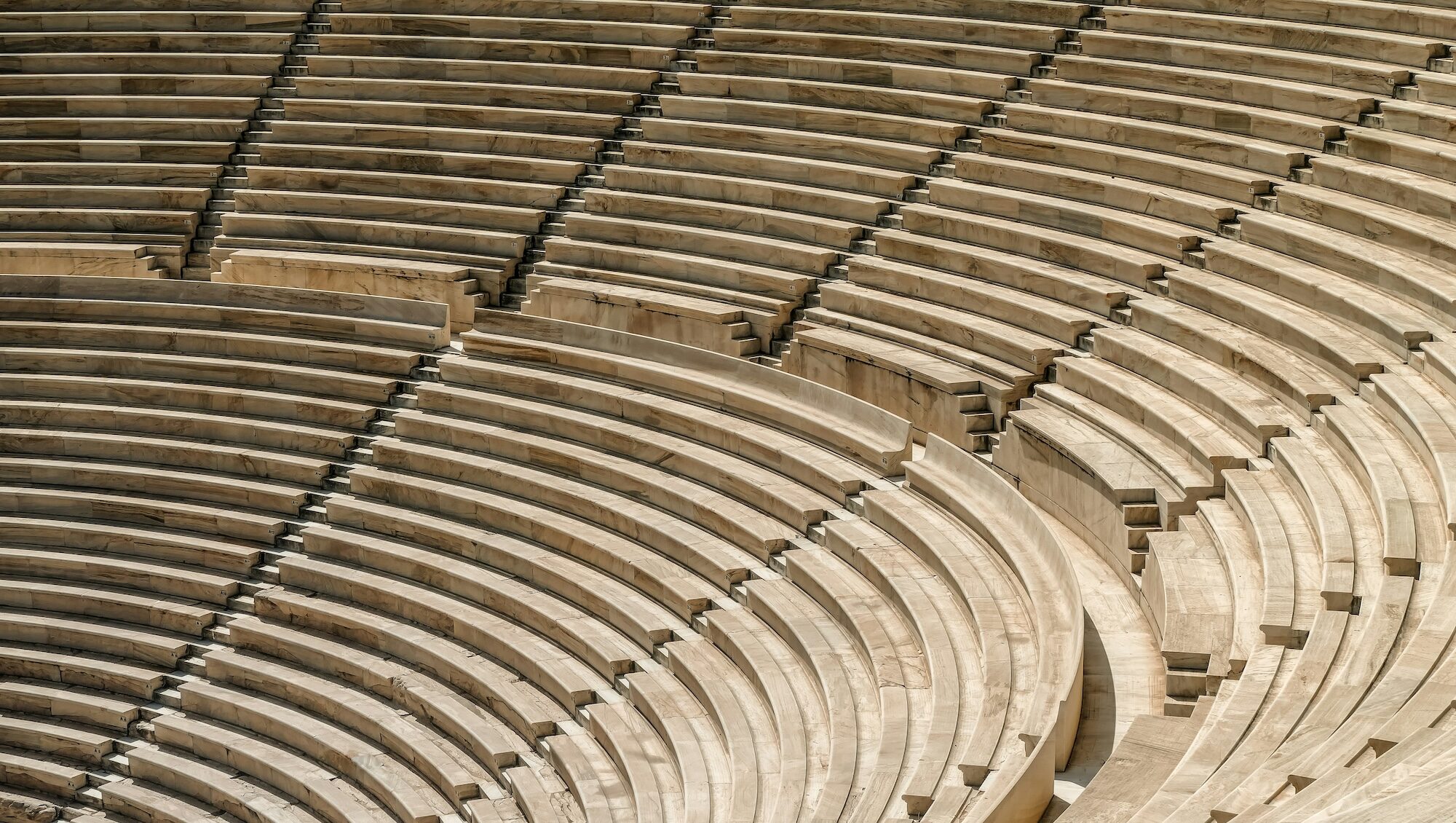Photo by BMarcel Strauß
The Calm Design Approach shifts the focus from capturing attention to fostering meaningful, mindful interactions that prioritize well-being and presence in an overstimulated digital world.
In a world dominated by relentless stimulation, digital experiences have become battlegrounds for our fragmented attention. From glowing screens to constant notifications, we find ourselves entangled in a web of distractions, overwhelmed and disconnected from the present. The promise of seamless connection has, for many, given way to a cycle of anxiety and disconnection.
But what if design could do more than contribute to the noise? What if we could create experiences that respect attention, rather than exploit it? What if, instead of fueling endless interaction, we designed for moments of calm, clarity, and depth?
This is the essence of The Calm Design Approach, an approach to design that prioritizes presence over distraction, depth over overload, and intentionality over mindless engagement. Grounded in research across interaction design, contemporary art, materiality, and attention management, this philosophy challenges the prevailing mindset of design, offering a shift towards creating experiences that support well-being.
The Battle for Attention
In our increasingly connected world, devices are designed to compete fiercely for our attention. This battle for focus results in constant distractions and cognitive overload. This overload erodes our mental clarity, creating a sense of desensitization and, ultimately, stress.
The attention economy drives this dynamic, with companies prioritizing engagement at the cost of user well-being. The consequences are evident—rising levels of stress, lack of focus, and fragmented experiences. As designers, we must step back and reconsider our role in this ecosystem.
By embracing Calm Design, we can break free from the cycle of distraction. Rather than designing to capture and hold attention at all costs, we can design for meaningful moments that restore balance. It’s about creating experiences that empower users to move in and out of interaction freely, fostering a sense of agency over their time and focus.
Designing for Attention
Attention, once a passive element in design, is now one of our most valuable (and overexploited) resources. Traditionally, success has been measured by how long users engage, but what if success was defined by how much value users gained?
By integrating attention management techniques, we can create experiences that enhance cognitive well-being. This means designing gradual engagement over instant capture, allowing users to experience a flow without feeling trapped or overwhelmed. Calm Design advocates for the purposeful management of user attention, ensuring that every interaction is intentional and balanced.

Photo by Raphael Renter
Calm Design in Practice
- Beyond Screens
Viewing interaction as something confined to screens limits our creative potential. Calm Design embraces a broader understanding of materiality, drawing from contemporary art, environmental design, and sensory engagement to shape experiences that go beyond digital interfaces. This might mean integrating textures, light, sound, or even spatial arrangements to foster deeper, more meaningful connections between users and their surroundings. - Expanding Materiality
Once we move beyond screens, an infinite repertoire of materials opens up. Calm Design integrates diverse material natures—physical, intangible, environmental, cultural, and digital—to create meaningful, accessible, and immersive experiences. Instead of treating materials as mere tools, we consider how they shape interaction. Insights from art and design disciplines can help us redefine materiality, ensuring that interactions are not just functional but rich in sensory depth. Space itself is a material. By blending devices with their environments, we can create interactions that feel seamless and embodied, fostering a sense of presence. Algorithms can be used to infuse traditionally non-material elements with material-like qualities, expanding creative possibilities. - Context Awareness
Calm Design is deeply attuned to its surroundings. Every device, object, or interface exists within a unique physical, cultural, and sensory context. Whether it’s the ambient light in a room, the acoustics of a space, or the cultural background of the user, these factors shape interaction. By designing with context in mind, we can create experiences that integrate seamlessly into everyday life. Less intrusive, more intuitive, and deeply resonant. This means moving beyond generic, one-size-fits-all solutions. By prototyping in real environments, analyzing spatial and sensory factors, and embracing local knowledge, we can design experiences that feel natural, attuned, and inherently calming. - Embodied Interaction
Calm Design reconnects users with the present moment through embodied experiences. This goes beyond reducing distractions. It’s about designing for the whole person: how they move, feel, and engage with their surroundings. By prioritizing physicality, we shift from mindless interaction to mindful engagement. People are not just a pair of eyes. Multisensory design—incorporating visual, auditory, and tactile elements—can enhance perception, making interactions not just smoother but more grounding. Embodied experiences anchor users in the present moment rather than pulling them away from it. - Nature Inspired
Go for a walk and observe how nature designs. Patterns of anisotropy, material heterogeneity, and organic interaction offer endless inspiration. Nature doesn’t separate elements into isolated parts. It creates intricate systems of connection, collaboration, and symbiosis. Calm Design takes this holistic perspective, considering the ecology of our creations. How does a design interact with its surroundings? What relationships does it foster? Instead of designing in isolation, we must embrace interconnectedness, ensuring that our creations harmonize with both users and their environments. - Thoughtful Friction
While the tech world can be obsessed with frictionless design, Calm Design takes a different stance: not all friction is bad. While reducing effort can be beneficial, removing all friction can lead to mindless engagement or harmful behaviors, trapping users in endless loops of consumption. Calm Design challenges this paradigm. Instead of asking, How do we make this frictionless?, we should ask, How do we make this meaningful? Thoughtful friction can prompt users to engage more intentionally. By designing for clarity, focus, and mindful presence, we shift from capturing attention to fostering deeper connection. This doesn’t mean adding unnecessary barriers, but it does mean questioning the assumption that seamless, hyper-efficient design is always the goal. The right amount of friction, in the right place, can be a powerful tool for cultivating awareness. - Design Craftsmanship
Creating calm requires the mindset of an artisan. Designers must cultivate a craftsmanship approach, whether by refining their own material knowledge or collaborating with experts in various disciplines. The key is precision, intention, and deep care for how interactions unfold. Interaction Craftsmanship is about treating digital and physical interactions with the same level of detail and artistry as traditional craft. It prioritizes quality over quantity, depth over superficiality, and presence over distraction. No single designer can master every material or technique, though. That’s why interdisciplinary collaboration is essential. We should work alongside experts—scientists, carpenters, AI specialists, biologists, architects, musicians, and technicians—acknowledging that expertise is always shared. Humility in design leads to richer, more inclusive experiences, ensuring that what we create is not just functional but deeply resonant and human-centered.
A Call for Calm
Calm Design is not anti-technology; it is pro-humanity. It’s an approach that begins with the individual’s attention but extends into our relationship with nature, ourselves, community, and the world at large. As designers, we are invited to rethink our role. Not as architects of attention traps, but as facilitators of restorative, meaningful experiences.
The way we design today shapes the way we live tomorrow. Will we continue down the path of digital saturation, or will we create spaces, both digital and physical, that encourage depth, reflection, and calm?
This is the shift that Calm Design calls us to make.



